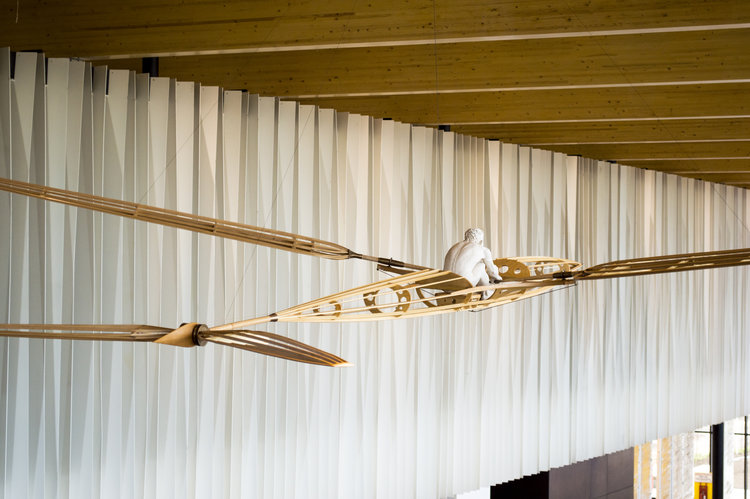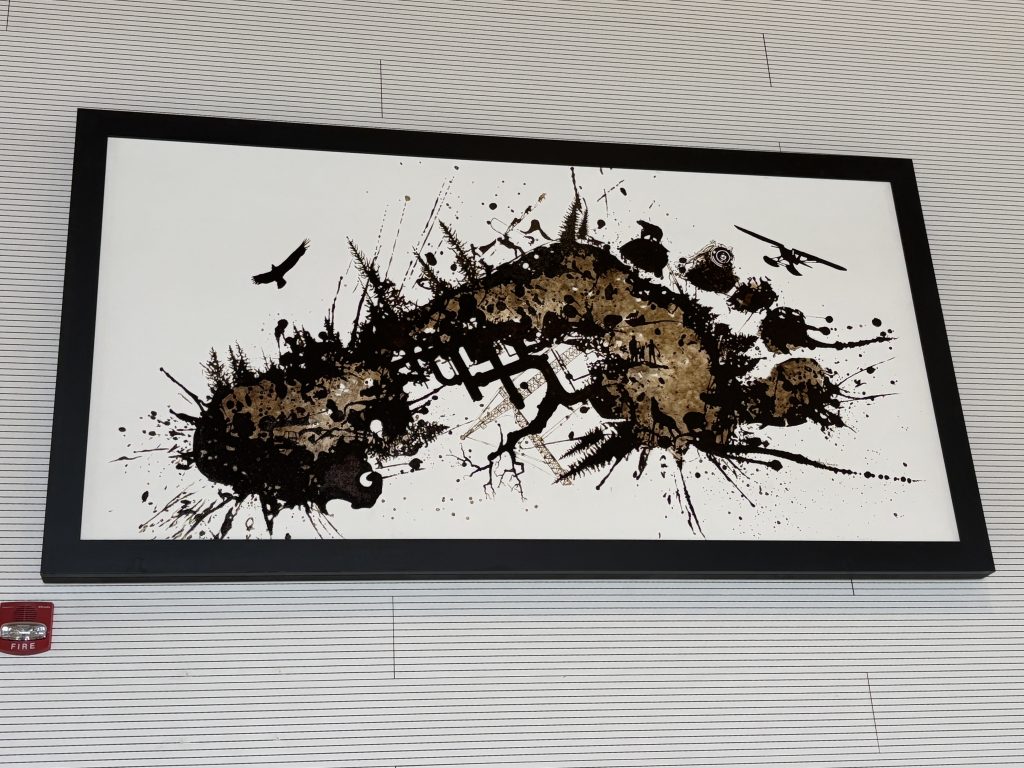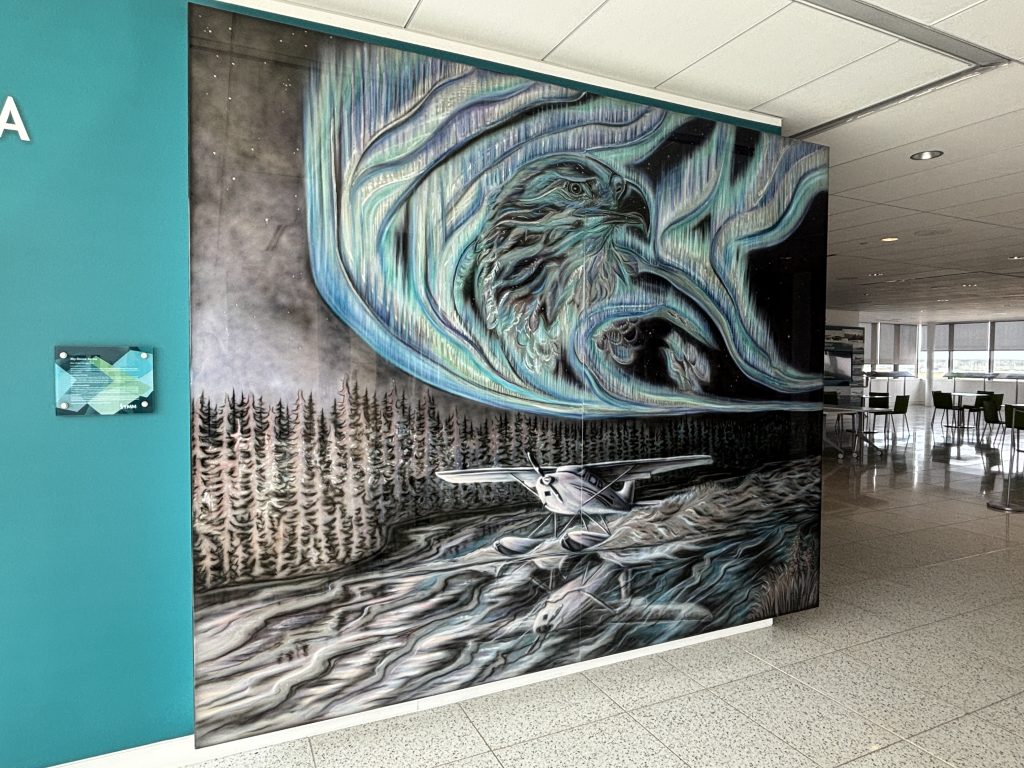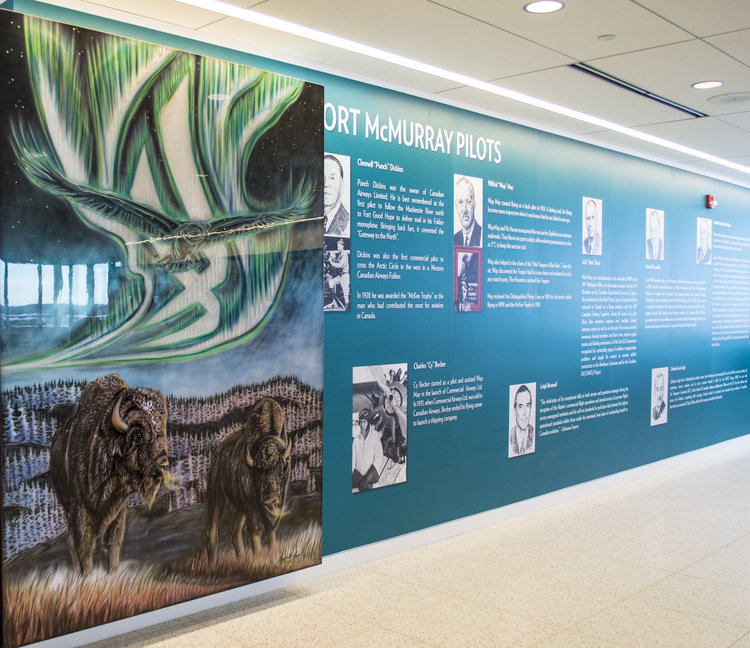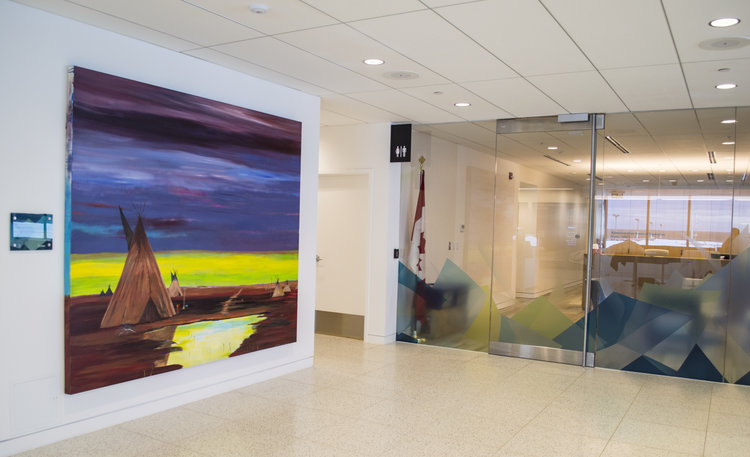Unearthing Black Gold

Alexandra Kavanagh, 2025
Acrylic Latex Paint on Composite Metal Panels
Artwork Location: Level 2 – YMM Courtyard
Alexandra Kavanagh’s Unearthing Black Gold: A Tribute to Human Endeavour and Innovation is a four-piece art installation created to honour Fort McMurray Wood Buffalo’s energy sector. Each of the four panels tells a story of the oil sands process from mining to upgrading and sustainability to reclamation.
Mining – Mining reflects on the industrial legacy that began in 1967, when Suncor opened Alberta’s first oil sands mining pit in Fort McMurray. Towering bucketwheel extractors dominated the landscape, setting the stage for decades of transformation.
Through a bold colour and jarring perspective, the painting captures the scale, energy, and paradox of an environment that is a controlled chaos, where human ambition meets an ever-changing earth.
Mining captures the sheer scale and tension of industrial ambition.
Upgrading – Upgrading captures the industrial majesty of an oil sands upgrader – a vital stage in transforming raw bitumen into synthetic crude. With its maze of pipes, pumps, and pressure vessels, the scene evokes the overwhelming experience of standing inside a mechanical city alive with motion.
Upgrading honours the skilled tradespeople who build, maintain, and operate these systems year-round. Their work powers this complex landscape, where precision and scale converge.
Sustainability – Sustainability explores the deep ties between oil sands development and community prosperity. The interwoven forms reflect the complex relationship between economic growth, environmental innovation, and social wellbeing in our region.
Sustainability honours how the industry fuels opportunity – creating jobs, funding public programs, and drawing people from around the world to build better lives. It is a visual expression of how the oil sands continue to shape the fabric of community life, while adapting to meet the needs of a changing future.
Reclamation – Reclamation reflects the quiet transformation of former industrial sites into self-sustaining ecosystems. In Alberta’s oil sands region, disturbed land is reclaimed, a process that blends science, labour, corporate social responsibility and vision.
The work honours those who restore these landscapes, reintroducing native species and rebuilding habitats with care and precision. It is a tribute to the people behind the work that returns life to where industry once stood.
The Fort McMurray Airport Authority and the Regional Municipality of Wood Buffalo commissioned this piece.

